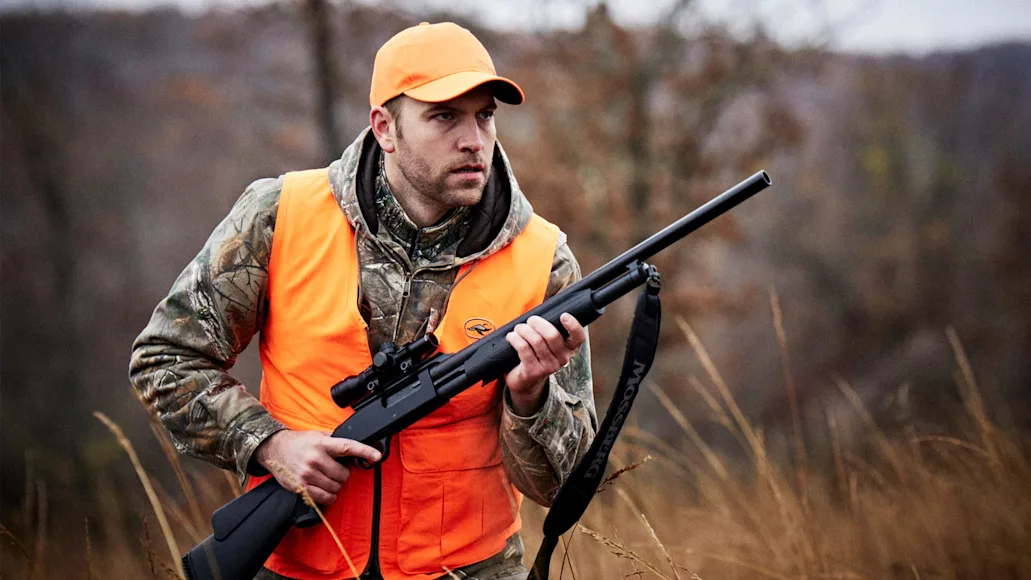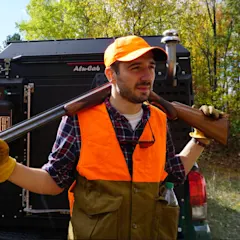Still hunting’s greatest virtue is that you don’t have to remain still. You get to move, which should be a welcome change of pace for anyone who’s been sitting in a tree stand for too long. Despite its name, still hunting involves moving quietly through the woods, pausing often to catch a glimpse of an animal. The technique sounds simple, but if you’re used to hunting from stands and blinds, it can take a little while to get the hang of it—and a lifetime to master.
One of the first books on still hunting, The Still Hunter, was written by Theodore Van Dyke in 1882, making the practice decidedly old school. But it is still a solid strategy for hunting big game in dense woods, patchy farmland, or mountains. If you live in any of that kind of country, and you’re tired of waiting for a deer to come to you, you should try still hunting.
Learn how to subscribe to the new Field & Stream magazine here!
What is Still Hunting?
The basic idea behind still hunting is to move through the wilderness slowly and quietly enough that you can spot game before it spots you. That generally means taking your time and using terrain and cover to you advantage, often moving as though an animal is right around the next corner. In doing so, you can cover ground and work through wooded areas that would be difficult if not impossible in hunt a spot-and-stalk manner.
Table of Contents
How to Find Places to Still Hunt
How to Move When You’re Still Hunting
How to See an Animal Before it Sees You
Get the Right Still Hunting Gear
Still Hunting is Going to Suck for a While
How to Find Places to Still Hunt
Scouting is just as important for still hunting as it is for stand hunting. You want to up your odds of running across an animal, so it’s a good idea to pin a couple of places that are likely to hold them. We’ll mostly talk about whitetail deer here, but finding a good place to still hunt applies to all kinds of game. It’s best to find active sign in the area you want to hunt before planning your route.
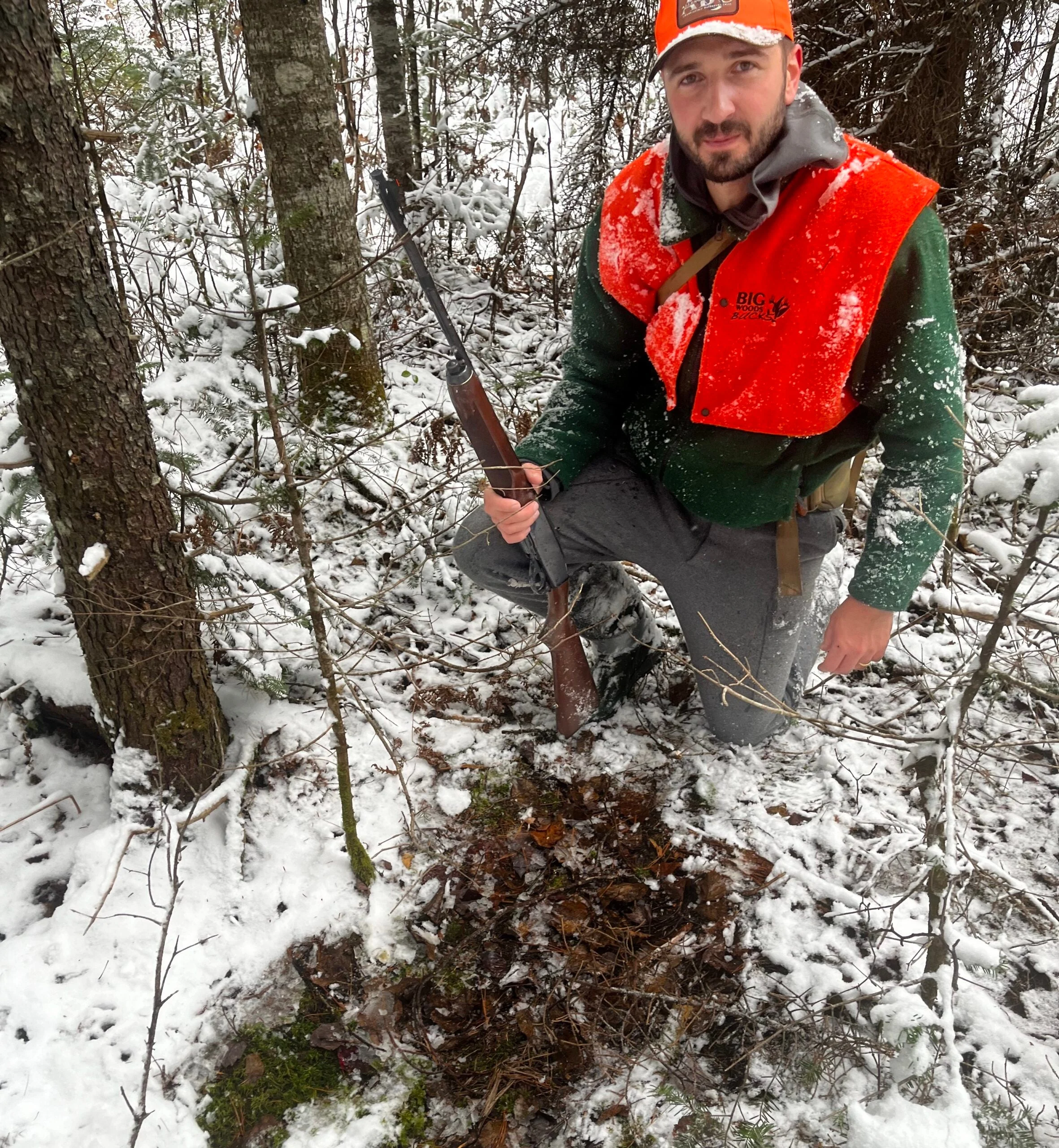
The author takes note of a deer bed while still hunting. Matthew Every
For deer, this can be droppings, tracks, beds, rubs, and scrapes. You’ll also want to note feeding areas and bedding areas and try to plan your hunt to intersect them at the time of day when you think deer will be there. During the rut, you may want to incorporate terrain features, like funnels, into the mix. Make note of these things before and while you’re still hunting, and build up a record of them to refer to season after season.
Once you’ve identified good sign and have a general understanding of the terrain, try to plan a route that gives you an advantage. For example, in hilly terrain, still hunt ridges that overlook areas likely to hold deer or funnels that a buck might travel through. In flatter terrain, still hunt through areas with enough cover to hide behind. A bench on a mountain may offer a good vantage point, while a derelict field full of cedars may give you good cover. Stream beds will hide the sound of your footsteps, and hedgerows can break up your outline. Constantly consider the cover and terrain around you and use it to your advantage.
How to Move When You’re Still Hunting
Deer, and most other big-game animals, are looking for movement more than anything else. You can actually get away with making a little noise while you’re still hunting, as long as the noise you make sounds like something deer are used to hearing. A good rule of thumb is to try to walk quietly when conditions allow and try to sound like a another critter the woods are noisy. Many still hunters use a step-step-pause cadence to mimic a deer waking or will cluck on a turkey call occasionally while scratching the leaves with a boot. What you can’t do is go stomp-stomp-stomping through the woods, breaking every stick on the way.
The best advice I’ve ever gotten on still hunting came from two New England deer trackers on two separate occasions. They both plan how they’re going to walk 10 steps ahead. This does two things. It keeps you away from thick brush and broken sticks that will make noise, and it helps you to slow down.
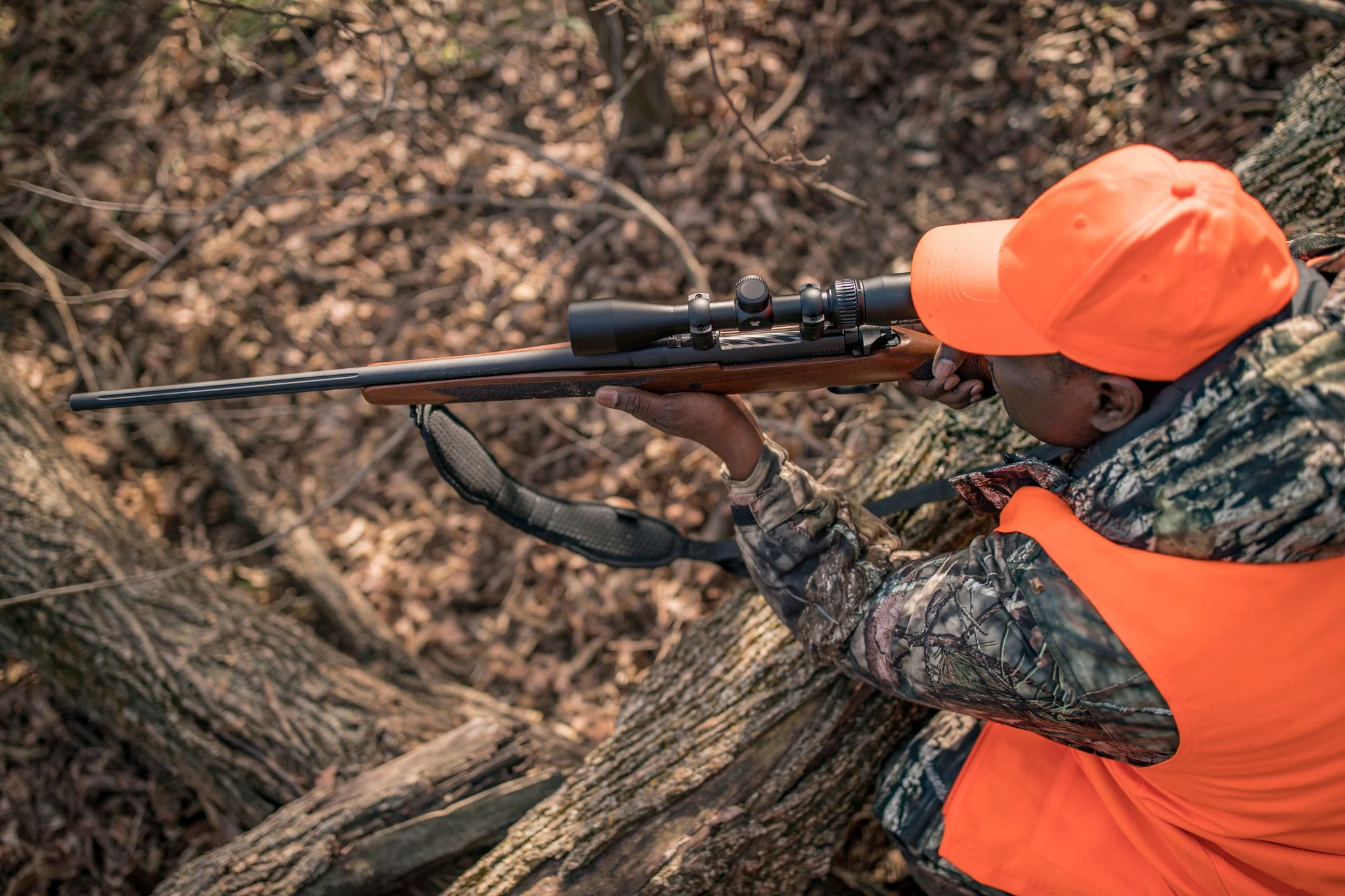
Whenever possible pause near cover and natural gun rests, in case you get a shot. Mossberg
When still hunting through the woods, you want to establishing a rhythm. You move for a several beats, then pause for several more. You’ll know that your rhythm is too fast if you aren’t able to plan 10 steps ahead of yourself, and if you aren’t scanning the woods around you over and over again. Concentrate on how your feet hit the forest floor and roll them from heel to toe. Still hunting is like meditating—you need to be absolutely present and mindful of how your body interacts with its surroundings.
While you move through the woods in a zen-like fashion, you must also be aware of the wind. If the wind is at your back, every deer ahead of you will be gone by the time you get there. You need to either hunt with the wind in your face or with a crosswind. That said, swirling windy days aren’t necessarily a bad thing. Wind makes every branch in the woods move. It’s noisy, too. This will put a deer’s senses at a disadvantage and make you harder to spot.
The Best Conditions to Try Still Hunting
Speaking of the weather, it plays a huge role in still-hunting success. Some conditions are ideal for still hunting while others almost preclude it. A forest floor wet from a recent rain, for example, allows you to slip through the woods almost noiselessly. Wind, rain, sleet, and snow can all hide sound and movement, while often putting game animals in predictable places, like the lee sides of hills or under a protective canopy. When the woods are still and the leaves as dry as matchsticks, on the other hand, you’ll have your work cut out for you. You can still hunt successfully in these conditions (by trying to sound like another animal), but you might decide that you’re better off in your stand that day.
How to See an Animal Before it Sees You
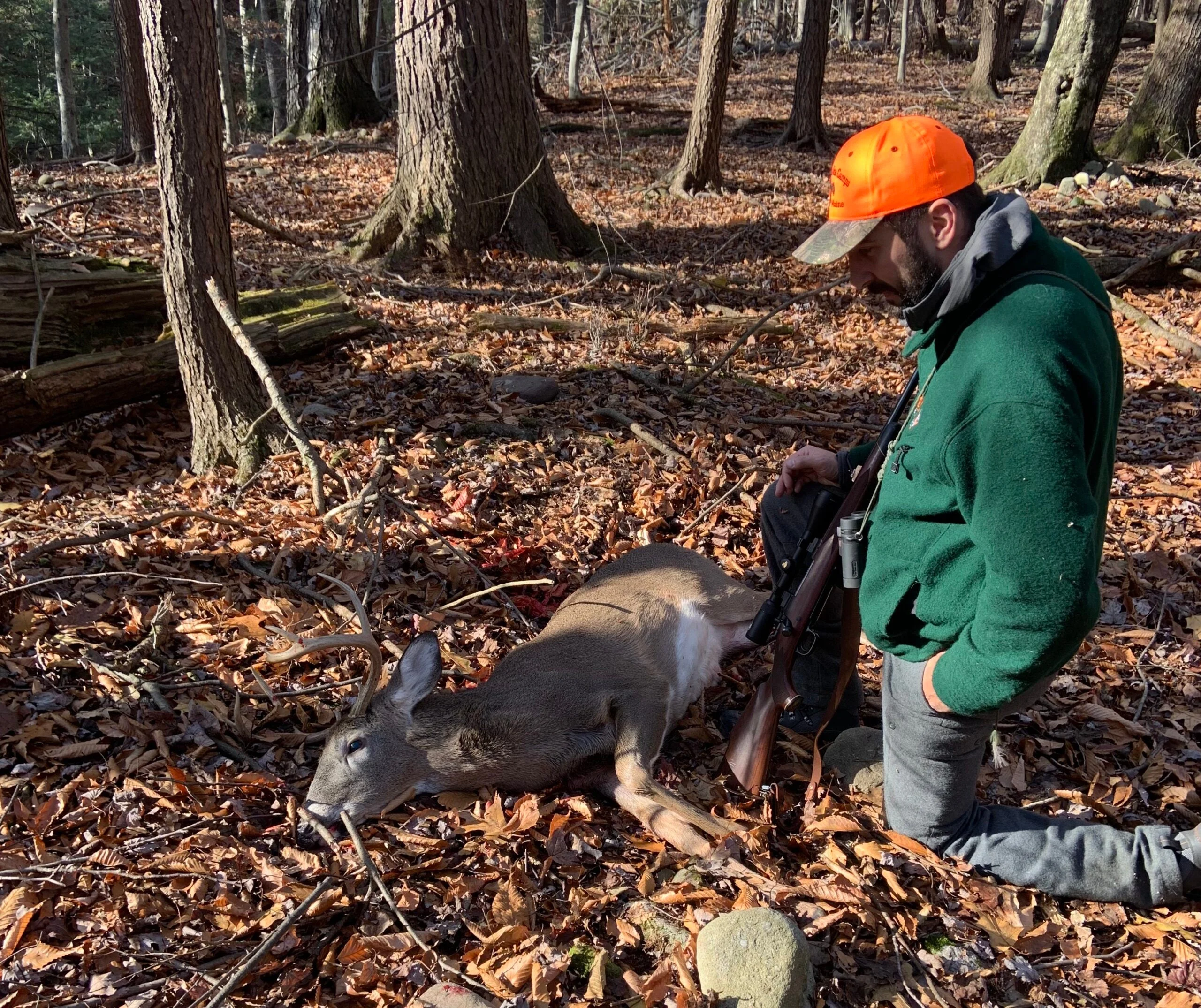
The author with a New York buck taken this past season by still hunting.
Don’t plan on seeing a buck standing broadside at 50 yards. You might, but you’re far more likely to spot a tail flick or an ear moving to brush away a fly. Look for parts of deer rather than the whole thing. Scan patches of grass for the top of a bedded buck’s head, or look for the curve of an antler coming from behind a tree. With any luck, the same cover that’s hiding the deer is also obscuring their vision, giving you a chance to see it before it sees you.
Another good thing to look for when still hunting is horizontal lines. Trees and vegetation grow mostly vertically, and if you squint, most of the woods just look like a bunch of stripes going up and down. The line of an animal’s back breaks this pattern and becomes easy to spot once you train yourself to see it. When you do, or when you see any of the other things above, freeze and try to identify exactly what it is. Glass ahead to confirm what you’re looking at. You’ll pause like this a lot while you’re still hunting, and one of those times, it’ll be a deer.
Get the Right Still Hunting Gear
Gearing up to hunt from a stand is a lot like that scene in A Christmas Story when Randy’s mom is suiting him up to go to school. Layer after layer of clothes may help keep you warm for hours in a tree stand, but it’s not what you want for still hunting. By the same token, you can leave that big backpack, heavy rifle, and thick pair of insulated boots at home, too.
The trick is to wear just enough layers to stay warm while you’re moving slowly, but not so many that you get too hot. My favorite still-hunting jacket is Filson’s Mackinaw Wool Cruiser
. The front has so many pockets that I don’t need to wear a backpack to haul all of my stuff. The back also has a large game pocket that works well for storing an extra layer should I need to. Best of all, it’s made of wool, which is extremely quiet, warm, and breathable. For other clothing, wool or fleece is best, while crinkly technical fabrics will make too much noise. Unless it’s raining hard, leave your rain gear at home.
As far as boots go, this will vary depending on where you are, but it’s good to stick with something lightweight with a sole that lets you feel the forest floor. You won’t have to worry about your toes going numb, because you’ll be moving, and you shouldn’t be concerned with tracking scent through the woods either. Still hunters in wet, boggy areas tend to wear rubber boots so they can cross deep water, and those in the mountains prefer sturdy but soft hiking boots. Some old-timers would tough it out in tennis shoes to be extra quiet while walking through the woods.

Low-power compact binoculars are perfect for still hunting. Zeiss
Your rifle should be light enough to carry all day with a good low-end magnification for shots under 50 yards. A 3-9X scope is great if you can still find one, and 1-6X LPVOs
work well, too. You should have a rifle that comes up quickly to the shoulder and one that you’re comfortable shooting offhand if you need to. Most target-style hunting stocks and chassis on rifles these days are not ideal. A few good models for still hunting include the Remington 7600, Remington Model Seven, Winchester Model 70, Marlin 336
, Bergara B14 Hunter, Mossberg Patriot, and the Ruger American Compact—to name just a few.
Finally, a good binocular is critical. Most still hunting is done in cover of one sort or another, so you don’t need a lot of magnification. Instead, you want a nice, big field of view and something that easy to carry and won’t get in the way. This is why most still hunters like a quality compact binocular, in 8×30 or even 6×30. And for still hunting, a simple harness, without a case, is usually best. You’ll be glassing constantly, and this keeps your bino right on your chest and instantly accessible at all times.
Still Hunting Success May Take a While
Still hunting is simple in theory. But in practice, it can take a while to figure out. You also need to work it out on your own. While a little 19th-century, one of Van Dyke’s quotes from his book is just as true today as when he wrote it:
“Consequently, he who would single-handed and alone outgeneral the bounding beauties of the forest and plain, and with a single ball trip their wily feet, is nearly always compelled to work out his own knowledge of how to do it. And this he must generally do, as I had to do it, by a long series of mortifying failures.”
In other words, you won’t know how to still hunt until you fail at it a number of times. As you move through the woods at a molasses-like pace, you’re going to see a lot of deer bounding away in the other direction. But when you figure out how to move and what to look for, it’ll all just click. Try not to get discouraged before it does, because when you do take a buck by still hunting, it’ll mean that much more.

